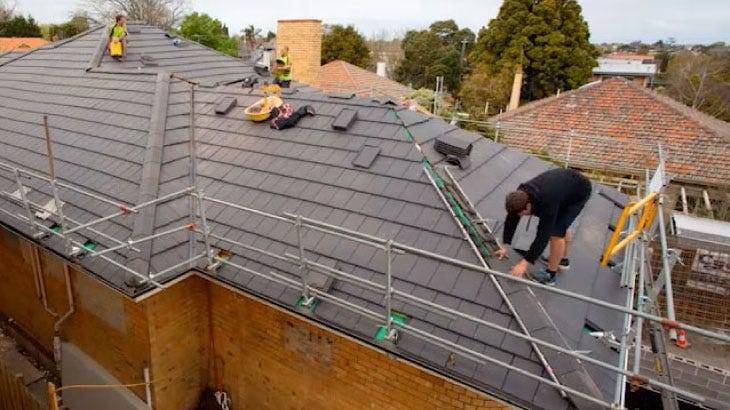- Introduction
Roof Installation 101 is a simple guide to help you understand everything about getting a new roof. A roof protects your home from weather and damage, so keeping it strong is very important. Whether you are replacing an old roof or building a new one, you need to know what to expect. This includes knowing when to replace your roof, how to pick the right material, how much it may cost, and how to choose a good contractor. With the right steps, roof installation can be smooth and stress-free. A strong roof keeps your home safe, dry, and looking great.
2. Before Installation: Getting Prepared Like a Pro
Before the work begins, you need to get ready. Planning saves time and helps avoid problems. It is important to know when your roof needs replacing, what kind of roofing is best for your home, how much money to set aside, and how to find the right people to do the job.
Is It Time? Know the Signs You Can’t Ignore
A roof does not last forever. If you notice certain signs, it may be time for a new one. Replacing your roof at the right time helps avoid bigger and more expensive problems later.
Signs you may need a new roof:
- Shingles are cracked, curled, or missing
- You see leaks or stains on the ceiling or in the attic
- Mold, moss, or algae is growing on the roof
- Your roof is over 20 years old
- The roof looks uneven or is sagging
- Your energy bills are going up for no clear reason
Choosing the Right Material
There are many roofing materials to choose from. Some last longer, some cost less, and some look better, depending on your home style. Think about your budget, the weather in your area, and how much care the roof will need over time.
Common types of roofing materials:
- Asphalt shingles: Low cost, easy to install, and come in many colors
- Metal roofing: Strong, long-lasting, and reflects heat well
- Clay or concrete tiles: Great in hot areas and very durable
- Wood shingles or shakes: Natural look, but needs more care
- Slate: Looks beautiful and lasts a long time, but is heavy and expensive
- Synthetic roofing: Made to look like natural materials, but costs less and is lighter
Budget Breakdown
Roof installation can be costly, so it is smart to plan your budget early. The price depends on the size of your roof, the material you choose, and how much work is needed. Setting a clear budget helps you stay on track and avoid surprise costs.
What to include in your roofing budget:
- Cost of roofing materials
- Labor and installation
- Removing the old roof
- Any repairs to the structure under the roof
- Permit fees and inspections
- Adding or replacing gutters or flashing
How to Choose the Right Contractor
Picking the right roofing contractor makes a big difference. A good contractor will do the job right, follow safety rules, and complete the work on time. Do not rush this step. Take time to find someone you can trust.
How to find a good roofing contractor:
- Ask friends or neighbors for recommendations
- Read online reviews and check ratings
- Make sure they have a license and insurance
- Get written estimates from more than one company
- Ask about warranties for both materials and labor
- Make sure they explain the timeline and payment clearly
A reliable contractor will answer your questions and give you peace of mind during the project.
3. The Installation Process: What to Expect
Once the planning is complete and materials are ready, the roof installation begins. The process usually takes a few days, depending on the size of your roof and weather conditions. A good contractor will make sure everything is done safely and correctly, from start to finish.
Here are the basic steps of roof installation:
- Old roofing materials are removed and cleared away
- The roof deck (wood base) is checked for any damage and repaired if needed
- A waterproof layer is added to help protect against moisture and leaks
- Flashing is installed around edges, chimneys, and vents
- Roofing materials (shingles, tiles, metal sheets) are carefully installed
- Gutters and other finishing touches are added or repaired
- The area is cleaned up, and a final inspection is done
This step-by-step process helps make sure your new roof is strong, safe, and built to last.
4. Conclusion
In short, Roof Installation 101 helps you understand what goes into getting a new roof. By knowing when to replace your roof, picking the right material, planning your budget, and choosing a trusted contractor, you can make smart choices. A new roof is a big job, but with the right steps, it can go smoothly. A strong and well-installed roof will protect your home and give you peace of mind for many years.

